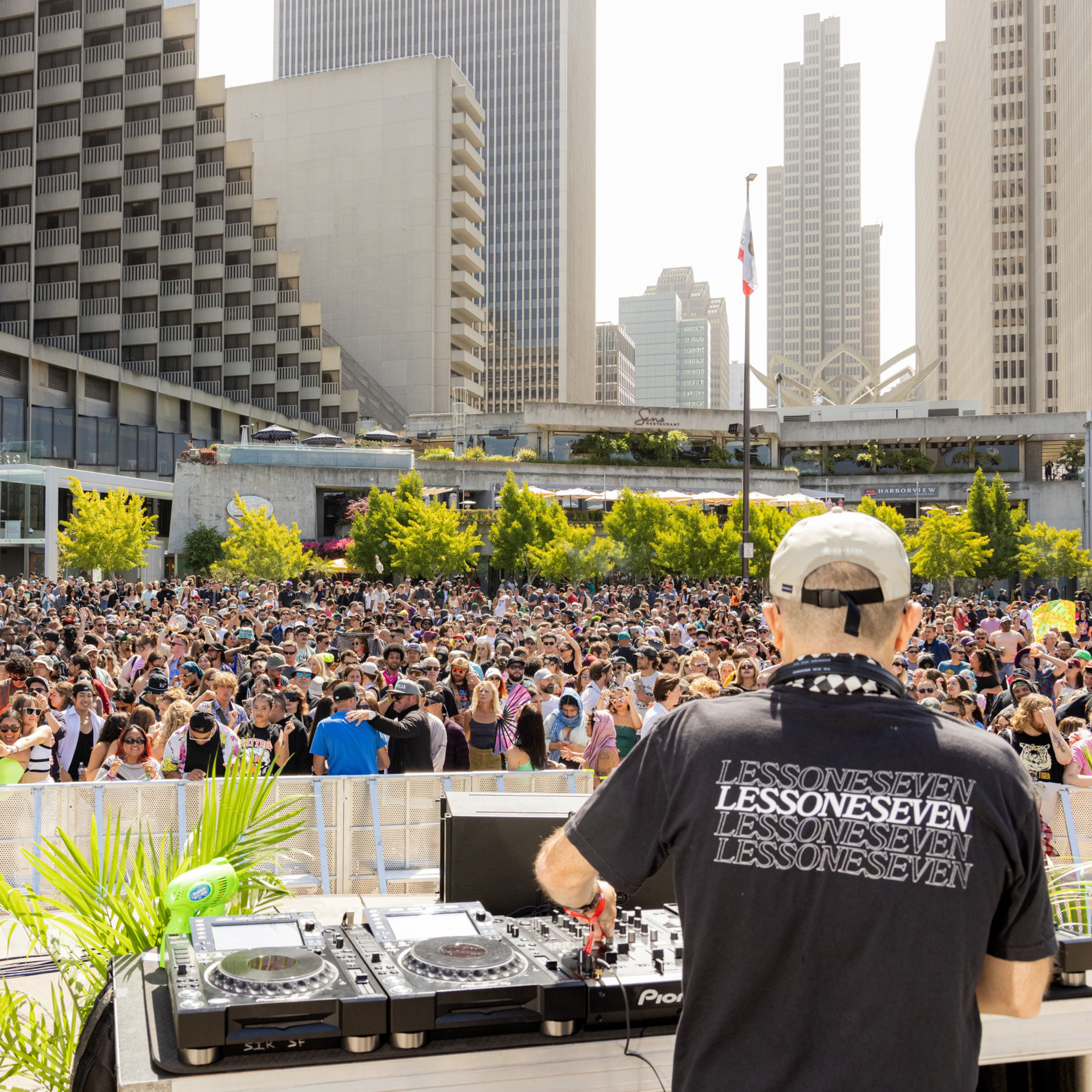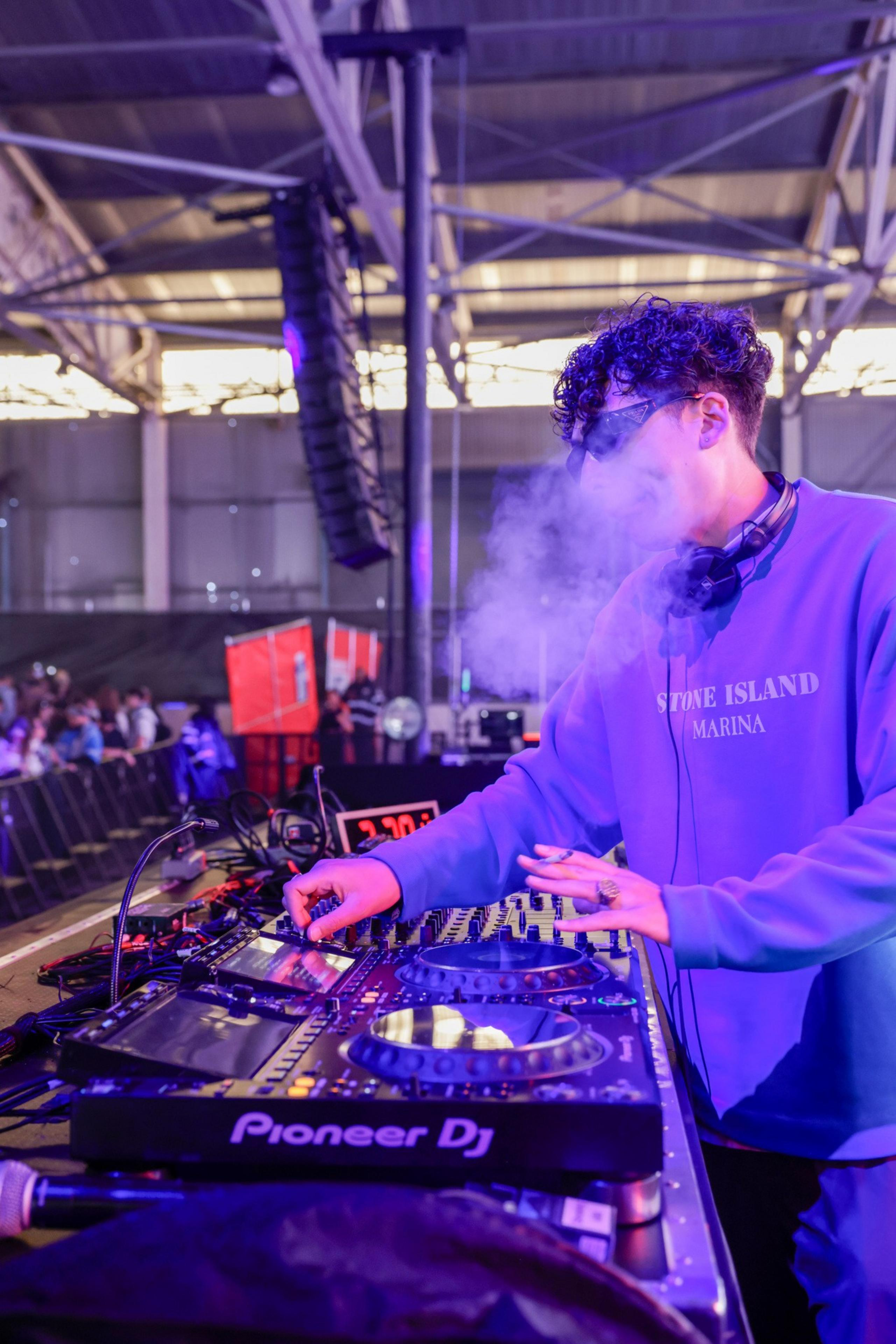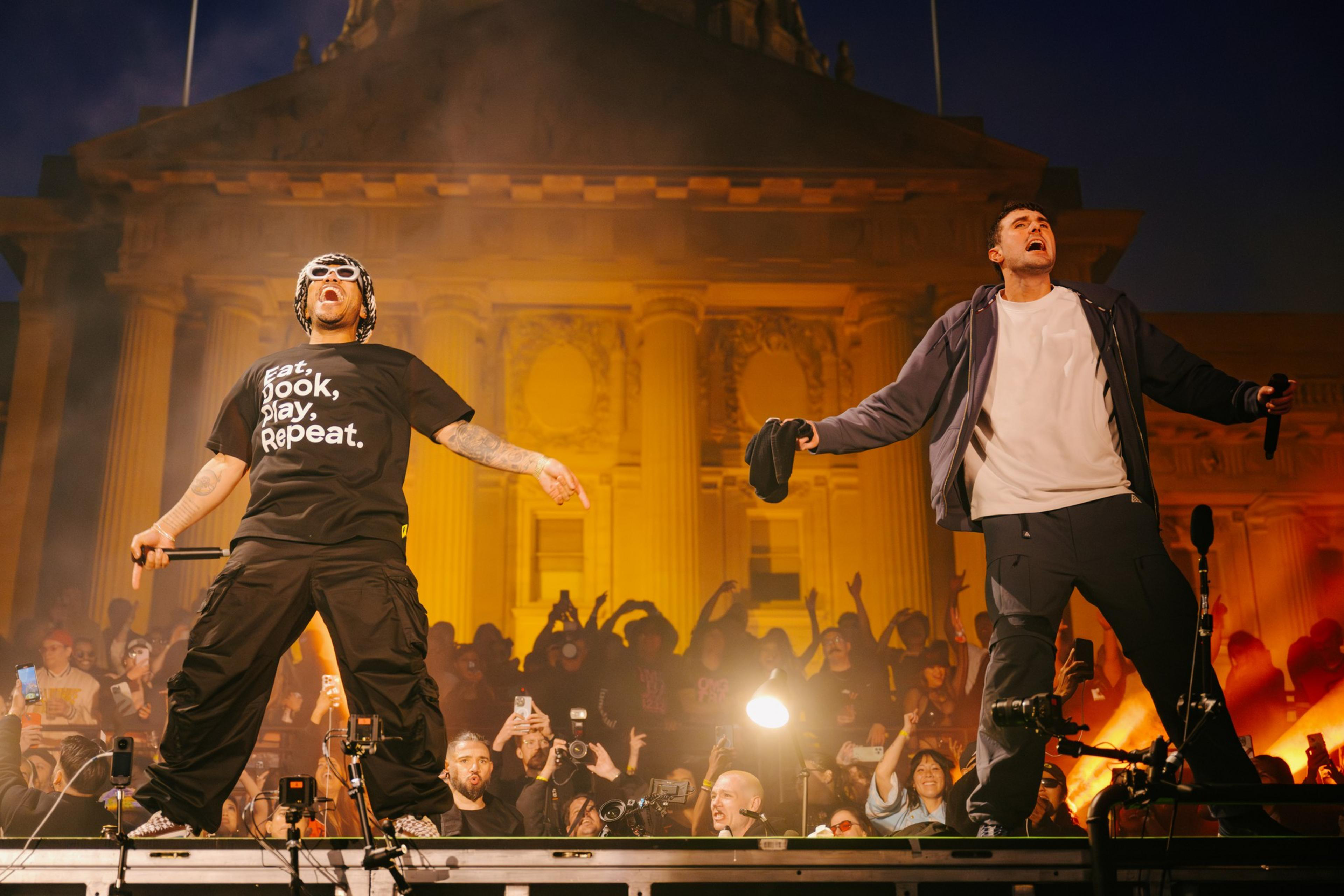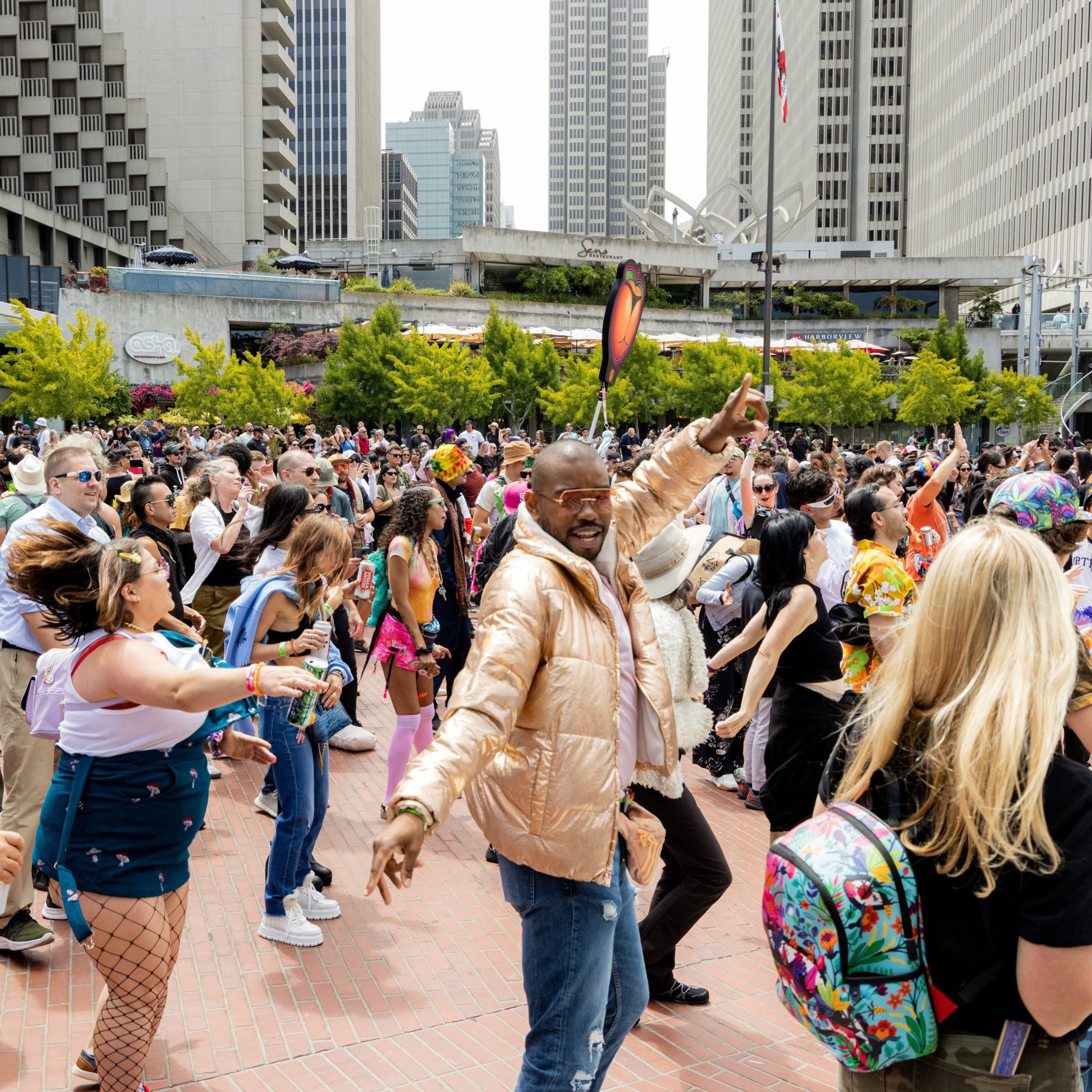Plugging Downtown First Thursdays on her Instagram this week, Mayor London Breed posted a slick, swiveling drone video of Salesforce Tower by twilight (opens in new tab) that cut to crowds on the street below. For the accompanying music, she didn’t source the song about someone leaving his heart here, that hoary flower-child retread by Scott McKenzie (opens in new tab), or something else ripped from the “Forrest Gump” soundtrack — oh no.
Instead, the mayor — or possibly a very online staffer — chose Australian DJ Dom Dolla’s 2019 electronic dance track “San Frandisco.” It’s not just hip. It’s aggressively, self-consciously hip.

San Francisco, coming off a long revenge summer of massive outdoor raves and large-scale laser shows, doesn’t seem prepared to go dormant after this heat wave ebbs. Rather, its cultural recovery is only intensifying. Covid-era relaxations on laws against open containers have become full-on public drinking zones. Underground venues are taking a chance on challenging neighborhoods. Amsterdam-style weed cafes are back on the menu (if likely a ways away), and we might even get a gay bathhouse or two.
This marks a distinct vibe shift. Only eight months ago, every other day seemed to bring announcements that Macy’s flagship was cratering or three-quarters of voters believed the city was on the wrong track. Now, museums are moving downtown, AI companies are decamping for Union Square, and there are so many big outdoor free shows that they’re conflicting with more established outdoor free shows.
Is it possible that national-punching-bag, poster-child-for-urban-collapse San Francisco is not only pulling back from the abyss, but actually — gasp — regaining its lost swagger for good?

As in-person as it gets
“I think San Francisco has been through a very rough patch and has had a slow recovery,” said Supervisor Rafael Mandelman, who last week introduced legislation to remove a quirk in the police code that prohibits gay bathhouses. “There is a desire for in-person experiences. It’s certainly more in-person than an app on your phone.”
Indeed, a bathhouse quite literally offers the most “in-person” experience of all. And it’s not the only movement toward greater sex-positivity, either. In response to the game of whack-a-mole the city has been playing with sex workers in the Mission, District 9 supervisor candidate Jackie Fielder suggested that a regulated area away from residential neighborhoods would be a more sensible solution than installing traffic barriers on Shotwell Street.
Opponents pounced on the idea of a so-called red-light district, although termed-out Supervisor Hillary Ronen last year called to decriminalize sex work (opens in new tab). Fielder declined to comment, but Mandelman agreed that the human sex drive can’t be legislated away. “If you can find an area for people to meet up for sex work that was not causing those problems for surrounding residents, that’s worth exploring,” he said.

A change in mood, doesn’t have to be sexual, of course. Sometimes it’s comparatively wholesome, luring people to Golden Gate Park’s Music Concourse with the promise of a late-afternoon show. Steffen Franz is the technical director of Illuminate, the nonprofit that mounts large-scale light works like Pride Month’s beefed-up laser cannons down Market Street and the Bay Lights (which are set to return to the Bay Bridge next year).
Franz has programmed the bandshell for the past four years — since Illuminate updated the lighting and sound systems — to the tune of 575 free performances by reggae artists, singer-songwriters, and internationally famous house DJs. Have audiences displayed an increased appetite for any particular genre? “There’s a lot more everything than there used to be,” he said. “In the old days, if you didn’t have a band, people didn’t take it seriously. People didn’t take a DJ seriously. Now, it’s a different world.”
Formerly, he said, attendance by 100 to 150 people would be a great night, but Fridays now average around 500, and acts like DJ/producer Doc Martin and punk band Scowl each bring in more than 2,500. Kronos Quartet, the genre-spanning local string ensemble that books gigs like the Transamerica Pyramid’s grand reopening, got 3,000 fans to come out.
The sound system has redefined what is possible, Franz said, broadening the idea of what a top-tier concert in the park can be. “What was all about Jerry and Jimi and Janice is now all about current-day music,” he said — particularly EDM, which appears to be the unifying sound of San Francisco’s post-pandemic comeback, crowned by the Portola Music Festival, a massive two-day event at Pier 80.

SF Live, the six-month series of shows in the mold of the Stern Grove Festival, is just one of the city’s forays into house, techno, and other electronic genres. Independent promoters Noise Pop and Another Planet Entertainment have curated and cross-pollinated raves and dance parties nearly every weekend, sprinkling shows throughout Golden Gate Park and in outdoor gathering places like Union Square and the Embarcadero. “It’s popping a lot more than it was a year or two ago,” Franz said of this burgeoning scene. “It’s people not only believing our city is making a comeback, but it should be the amazing hub of art in our country.”
Can data support vibes?
Certainly, not everything’s rosy. In September, a 49ers player was shot in broad daylight in Union Square, and well-known queer muralist and performer Diego Gomez was severely beaten (opens in new tab) outside his Tenderloin home. Michelin-starred restaurant Aphotic closed last week, with chef Peter Hemsley placing the blame in part on its location at the “ugly butt end of a desolate convention center suck hole (opens in new tab).”
For too long, bad vibes have outstripped positive statistics to become de facto evidence that the city is going in the wrong direction. It was City Hall’s misguided policies, not national retail trends, that killed Macy’s and emptied the former Westfield mall — or, at least, that was the narrative on X.
But if Bip City is to become Bop City, sooner or later, the city will have to show its math. According to Kate Patterson, director of external affairs for the Office of Economic and Workforce Development, preliminary data is in. The 70 events that City Hall staged in June, July, and August drew more than 45,000 attendees to formerly moribund downtown San Francisco. A single independent event with OEWD support, the Oktoberfest street party in California’s first Entertainment Zone, attracted 10,000 revelers. Participating businesses reported 15 times their typical sales, Patterson added.
Countering the jab that City Hall has been fiddling while Rome burns, the city has thrown substantial sums at a range of events, from June’s monster Fred Again x Skrillex rave in Civic Center to Litquake and the inaugural Black Art Week. The recovery, then, is driven by rediscovery. “If you can go into the street or a park or a plaza and be surrounded by hundreds or thousands of people, it just creates a new experience that you wouldn’t have otherwise,” said Ben Van Houten, OEWD’s director of nightlife initiatives. “It’s an embarrassment of riches, honestly.”

Of course, one person’s music is another’s deafening racket. San Francisco loves a formal complaint: about festivals, about bars, about possibly losing a chunk of the 49-Mile Scenic Drive to a park. But what about something like Golden Gate Park’s bandshell, which has a couple of hundred thousand people living within a two-mile radius?
Complaints are rare. “We have really tried to manage the sound in a way that is responsible for the neighborhood,” Franz said. In fact, Illuminate makes an effort to acknowledge neighbors who say a show has gone on long enough. “But we can also be very frank when it’s a Saturday afternoon,” he said. “I’m sorry, if it’s a Saturday afternoon, it’s gonna bang a little bit.”
